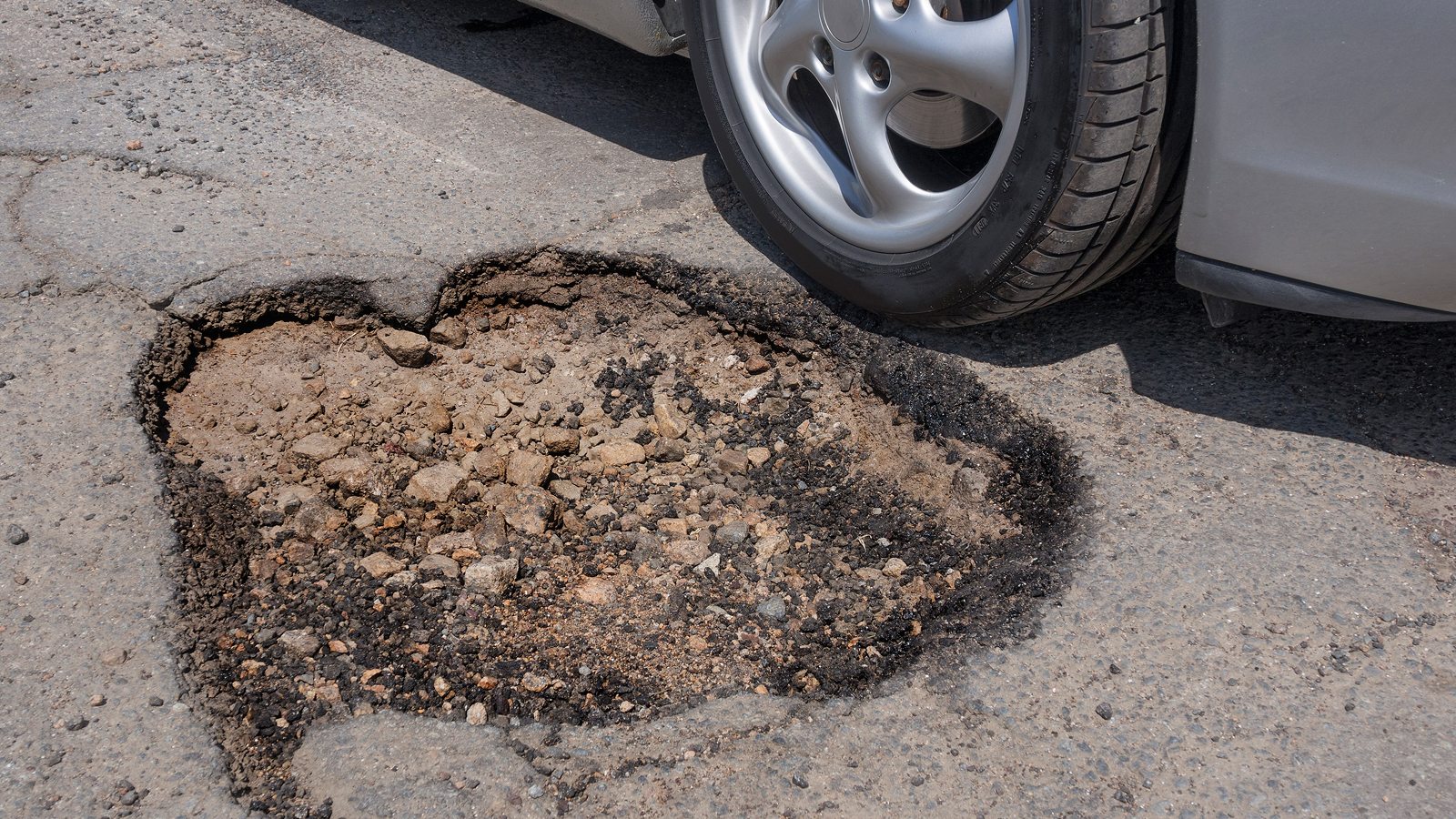For motorists, the arrival of spring generally brings clearer driving conditions. We no longer have to worry about black ice, blowing snow and the other hazards of winter. But there’s one cold-weather holdover that causes no end of grief: Potholes.
A 2021 CAA report found that Alberta drivers shell out an extra $64 per year on average due to poor road conditions—including potholes. According to AMA Driver Education, the harm is most often done to tires and rims. The rim can bend or lose one of its wheel-balancing weights, which may introduce vibration.
Driving over a pothole can also sometimes damage a tire’s internal steel belts, causing them (and the tire) to go “out of round,” negatively impacting your ability to drive comfortably and safely. Hubcap loss is common, too.
Repeatedly driving over potholes, especially at higher speeds, can have a cumulative effect that results in bending your vehicle’s suspension or steering parts and damaging shock absorbers.
The larger the city, the more potholes to navigate. Red Deer deals with 10,000 to 14,000 annually, while Calgary road crews filled almost 37,850 holes in 2024. In Edmonton, more than 537,000 holes were filled in 2024. Knowing how to safely avoid these hazards—and avoid damage to your car—is an important driving skill. Here are some valuable tips:
POTHOLE AVOIDANCE 101
• Always scan ahead while driving. You’ll be better able to spot a pothole in advance, allowing time to change lanes or safely steer clear of it.
• Your following distance should be—at a minimum—three seconds behind the vehicle in front of you. Leaving plenty of space between your car and the vehicle in front of you increases your odds of identifying a pothole with enough distance to avoid it.
MORE TO READ
The wheel story: A guide to tires and how to care for them
• Never swerve abruptly to avoid a pothole. This could cause a collision. Drivers in other lanes can’t be responsible for road hazards in your lane.
• Be cautious about driving through puddles, as they may be hiding potholes.
• If you can’t safely avoid a pothole, slow down to help mitigate damage. But take your foot off the brake just before you drive through the hole: This gives your suspension more “travel” to absorb the blow. (Braking fully could cause the suspension to bottom out and send a bigger shock to the tires, rims and chassis.)
• Ensure your tires are inflated to the manufacturer’s recommended pressure. Under- or over-inflated tires can worsen pothole damage.
SEE A POTHOLE? REPORT IT!
You can also help fellow motorists avoid potholes by reporting the annoying pits you spy to city hall. While individual municipalities are responsible for repairing potholes that appear on their streets, it’s impossible for road crews to monitor every road, all the time. Most cities—including Edmonton, Calgary, Red Deer and Grande Prairie—make it easy to report a pothole by phone or online. Alerting city staff to a pothole’s presence means it’s more likely to be fixed in a timely manner.
MAKING A CLAIM FOR POTHOLE DAMAGE?
Pothole damage is common and can be costly to repair, so most insurance companies do offer coverage for it under the “collision” portion of automotive policies. However, coverage for potholes is not mandatory; check your policy to find out if you’re covered.
MORE TO READ
Picking the right pair of sunglasses to improve your ability to drive safely
You’ll also want to consider your options before making a pothole-related claim. In order to make a claim, for example, it must be absolutely clear that the damage to your vehicle was caused by a pothole. (Front-end mechanical issues and general wear and tear are not covered.) And because you’ll be making a collision claim, you’ll be required to pay your collision deductible. Note too that claims made under your collision coverage may affect your overall insurance rate.
For these reasons, it’s important to get a professional estimate to determine the extent of the damage to your car—in order to assess whether or not to make an insurance claim. Then speak to your insurance representative to make sure you fully understand your coverage and your options for getting the damage repaired.
WE’VE GOT YOU COVERED
When your vehicle’s been damaged, it’s critical to take it to a high-quality repair facility, such as an Approved Auto Repair Shop (AARS) that’s been certified to have met AMA’s strict standards and background checks. At AARS facilities, AMA members receive unique benefits, including a 12-month/20,000-kilometre parts-and-labour warranty on repairs.
AARS in Edmonton: Oil Town drivers can trust their vehicles with AMA-approved Bruce Stewart’s Auto Repair Centre.
